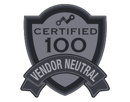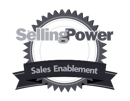sales process
3 Proven Ways To Get In Front Of Decision Makers
I’ve been buying and selling for close to 20 years. And when it comes to finding ways to get in front of decision makers, I’ve tried them all.
6 ways to create an actionable sales process
If it is one thing research shows time and time again, it is that top performing sales organizations adopt a structured approach to the way they sell. A key component of this structure is the sales process, which should reinforce the right behaviors and guide each member of the sales team towards the right next action.
Are you ready to fall in love with process?
At Membrain, our goal is to develop specialized tools for the modern salesforce. We want to provide a software platform that makes it easy for companies to execute their sales strategy and consistently hit their targets.
What is your opportunity definition?
Let’s start with a quick experiment: select an opportunity from the early stages of your pipeline right now.
Who calls the shots? Understanding decision making committees
Much has been written about changing buyer behaviors, the automation of transactional sales and the sales profession’s continuing march towards increased irrelevance and inevitable extinction.
3 steps for successfully targeting and segmenting your customers
Success in B2B sales has little to do with individual behavior and professional selling skills. It depends on sales leaders’ ability to set the right direction and to empower the organization with the right tools. One tool is a customer segmentation and targeting model. Here are three steps to help you build a successful customer segmentation and targeting model.
External Exposure
Podcasts
- Tony Morris interviews George Brontén on the podcast "Confessions of a serial seller"
- Deadly Assumptions that are Killing your B2B Sales - Outside Sales Talk with George Brontén
- SaaS-Story in the Making: Designing a Buyer-focused Sales Process - with George Brontén
- Tibor Shanto, Sales Scrum, interviews George Brontén
- Andy Paul, Sales Enablement: Stop Killing Deals, with George Brontén
- Jonathan Farrington interviews George Brontén about Stop Killing Deals [the book]
- Sales Futurists: The Future of Professional Selling - What Will the New "Normal" Be Like?
- Sales Pipeline Radio: You’re Killing Sales Deals Without Knowing It: George Will Help You Fix It
- Penta Marketing Interviews George Bronten in the Podcast Emerging Stronger™
- Integrity Solutions: Unmasking and defeating deadly assumptions that plague sales organizations
Videos & interviews
- The Top 5 Ways You are Killing Your Sales - Brutal Truth Sales Podcast
- Phil Gerbyshak interviews George Brontén about the Stop Killing Deals book release
- Membrain's Founding Story
- Sales Tools - the Good, the Bad, and the Ugly
- Here's what to consider when adding or switching your CRM
- Productivity, efficiency, effectiveness – what’s what and where to focus?
- How to Build a Sales Process That Drives Successful Behaviors
- Can Checklists Stop Deals from Dying and Help Consistently Achieve Quota?
Guest Posts
- G2Crowd: "How to Get the Most out of Your Sales Technology Investment"
- Saleslounge: Varför dina stjärnsäljare blir dåliga säljchefer
- Saleslounge: Vad är komplex försäljning?
- Vainu: Så blir du en mästare på komplex B2B-försäljning
- CSO Insights: Sales Process Interview, Part 2
- CSO Insights: Sales Process Interview, Part 1
- Richardson: 3 Pitfalls that Still Make Sales Teams Waste Time and Lower Sales Effectiveness
- Smart Selling Tools: How to Stop Fighting the Monster of Sales Technology Complexity









